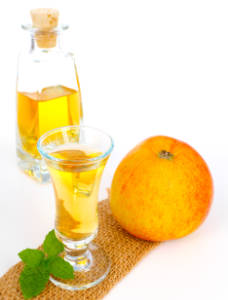Brandy Category

Brandy is often served as an after-dinner drink, or added to coffee. According to legend, it was first produced when an enterprising sea captain distilled wine in order to save space on his ship. He planned to reconstitute it with water when he arrived at his home port, but those who sampled the new concoction liked it just the way it was.
Today, most brandy is distilled from white wine, though red wine and other fermented fruit juices are also used. It's then aged in oak barrels for several years.
To get substitutions for brandy in general, click here.
Varieties:
There are two highly regarded French brandies: cognac and the slightly drier Armagnac. California also produces many fine brandies that are similar to cognac. Metaxa is a strong Greek brandy that tastes of resin. Spanish brandy is based on sherry, and is heavier and sweeter than French brandy. Apple brandy is distilled from apple cider, while pear brandy is made from pear cider. Fruit brandies are distilled from the fruit itself, instead of fruit juices.




















































































































































































































































































































































